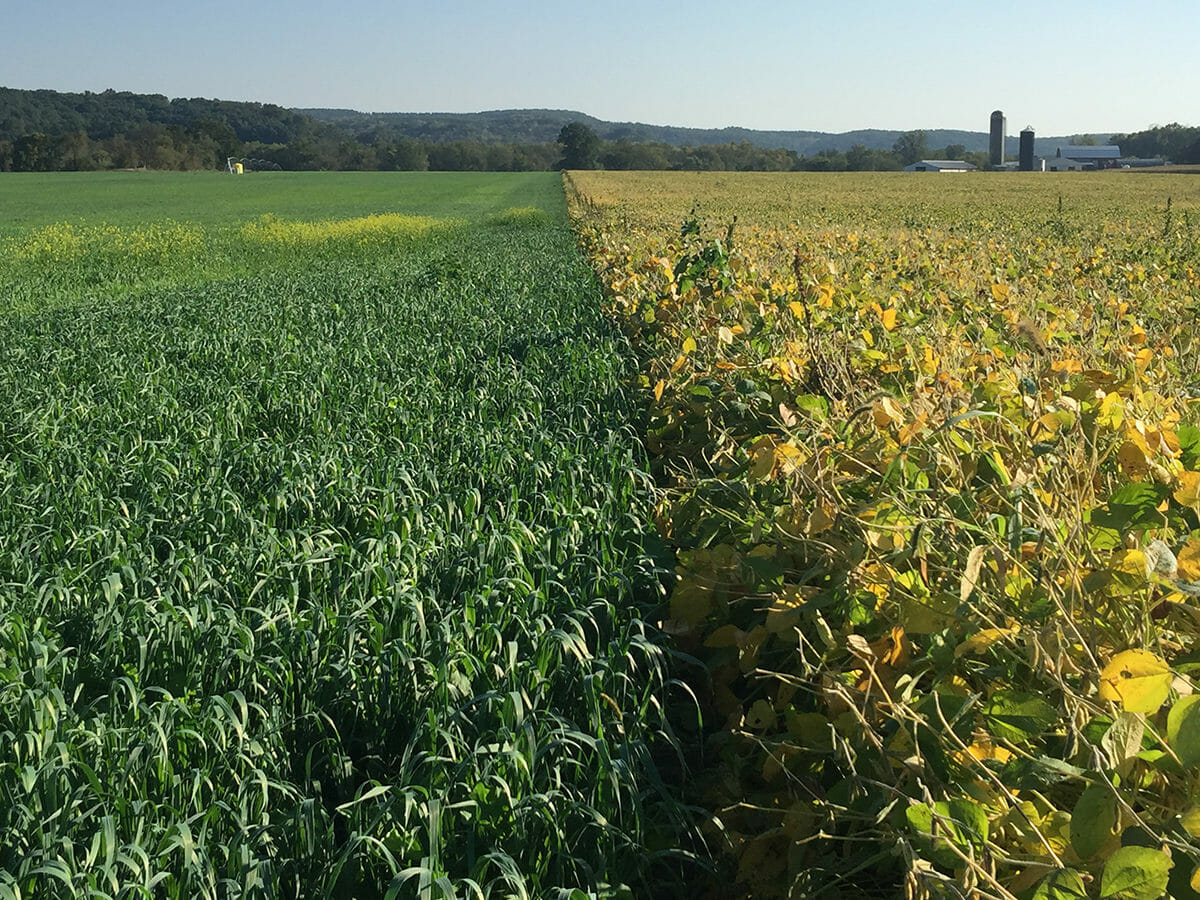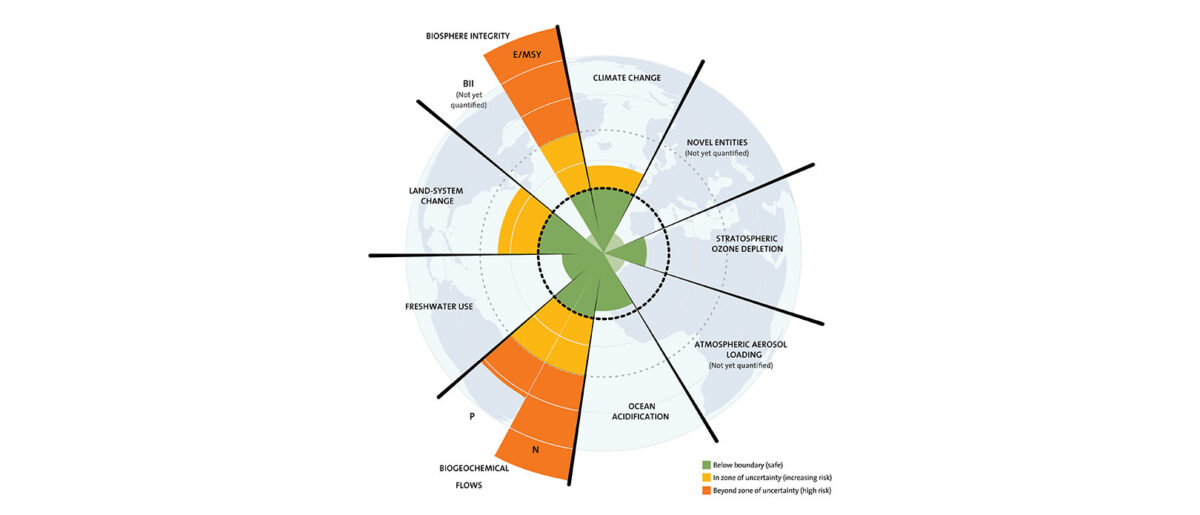Regenerative Agriculture – Its Benefits, Successes, and Scope 3 Impacts

Traditional vs. Regenerative Farming
A traditional farm in the Midwest region of the United States has been in operation for decades and follows conventional practices, including heavy use of chemical fertilizers and pesticides. The farm grows corn and soybeans, which are the dominant crops in the region. The farm is highly mechanized, with large tractors and other heavy machinery used extensively to till the soil and plant and harvest crops.
On the other hand, a regenerative farm in the same region is a newer operation that uses a holistic approach to farming. The farm employs cover crops, crop rotations, and reduced tillage practices to build soil health and increase biodiversity. The regenerative farm also raises livestock, including chickens and pigs, which are rotated through pastures to improve soil fertility and break pest cycles.
Stark Differences
Over time, the differences in farming practices becomes evident. The traditional farm has seen a decline in soil health, with erosion and compaction problems. The heavy use of chemical fertilizers and pesticides has led to soil degradation and contamination of nearby water sources. The farm has also seen a reduction in crop yields, which has been attributed to soil depletion and erosion.
In contrast, the regenerative farm has seen an improvement in soil health and biodiversity. The use of cover crops and crop rotations has led to better soil structure and moisture retention, resulting in improved yields. The livestock integration has also been successful, with manure acting as a natural fertilizer and improving soil fertility. The farm has also seen a reduction in weed and pest pressure due to the diverse crop rotations and natural pest control provided by the livestock.
The financial benefits of regenerative farming are also evident. While the traditional farm has seen a decline in profits due to decreased yields and rising input costs, the regenerative farm has seen an increase in profits due to improved soil health and reduced input costs. The regenerative farm has also been able to sell its products at a premium due to the growing demand for sustainably produced food.
While the above case study is fictitious, it is based on common trends and practices in traditional and regenerative farming and highlights the stark contrast between traditional farming and regenerative farming practices. In fact, there are many real-life regenerative success stories we could point to.
Brown’s Ranch
One such case study is the story of Gabe Brown, a farmer from North Dakota. Brown, who previously practiced conventional farming, transitioned to regenerative farming in the 1990s. He started implementing practices such as cover cropping, crop rotation, no-till farming, and integrating livestock into his farming system.
The results of his transition were impressive. Brown was able to improve soil health, increase yields, and reduce input costs. He also noticed that his farm was better able to withstand extreme weather events, such as droughts and floods. In addition, he saw improvements in the quality of his crops, as well as an increase in the diversity of plant and animal species on his farm.
Singing Frogs Farm
Another success story is Singing Frogs Farm, a small-scale vegetable farm located in Sebastopol, California. The farm, owned and operated by Paul and Elizabeth Kaiser, practices regenerative farming techniques such as no-till farming, cover cropping, and crop rotation.
The results of their regenerative farming practices have also been remarkable. Despite being a small-scale operation, Singing Frogs Farm is able to produce high yields of nutrient-dense vegetables. In fact, their yields are often higher than those of neighboring conventional farms. Their farm is also highly profitable, with a gross income of over $100,000 per acre.
Additionally, their regenerative farming practices have led to improvements in soil health and biodiversity. The Kaisers have noticed an increase in beneficial insects and other wildlife on their farm, as well as improvements in soil structure and water retention.
Mulloon Creek Natural Farms
Of course, these types of success stories are happening all over the world. One example comes from Mulloon Creek Natural Farms out of Australia, located in New South Wales. The farm, owned and operated by Tony Coote, practices regenerative farming techniques such as holistic planned grazing and intercropping.
The results of their regenerative farming practices have been impressive. They have seen improvements in soil health, with increased levels of organic matter and soil carbon. This has led to improved water retention and reduced erosion. In addition, they have seen an increase in biodiversity on their farm, with more bird and insect species present.
Regenerative Farming and Scope 3
Regenerative farming has the potential to significantly reduce Scope 3 impacts. Practices mentioned above like reducing tillage, planting cover crops, and rotational grazing can improve soil health and sequester carbon in the soil. This can help reduce emissions associated with fertilizers and other agricultural inputs, and also mitigate emissions from the production and transportation of synthetic fertilizers. By reducing the need for synthetic fertilizers, regenerative farming can also reduce the energy required for fertilizer production and transportation.
Regenerative farming can also reduce emissions associated with transportation by promoting the consumption of locally grown food. By producing food closer to where it’s consumed, the distance food needs to be transported can be reduced, thereby reducing emissions associated with transportation.
Overall, the adoption of regenerative farming practices can significantly reduce a company’s Scope 3 emissions, and can contribute to the achievement of sustainability goals. As more companies recognize the potential of regenerative farming to reduce emissions and improve sustainability, we may see an increase in the adoption of these practices across supply chains.
Ready to Explore More of the power of the Planet Price Platform?
Request a demo or a Scope 3 Tread Lightly Assessment



